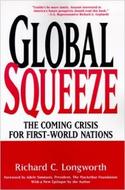What if the region we broadly understand as the Midwest, stretching from the foothills of the Alleghenies to the high plains, and from the chilly northern Great Lakes to the Ohio, Mississippi and Missouri river valleys, had been allowed to develop as organically as its eastern and southern -- and even western -- neighbors?
If it had, it would be far better understood, have a much stronger cultural clarity, and more recognized for its contributions to American society and economy. read more »





















